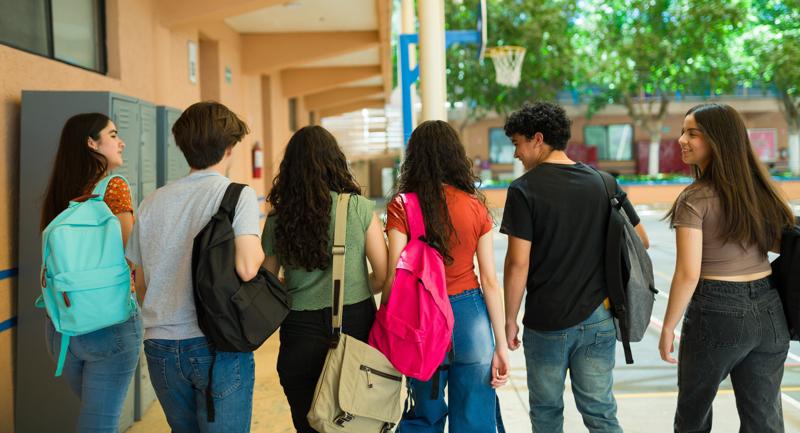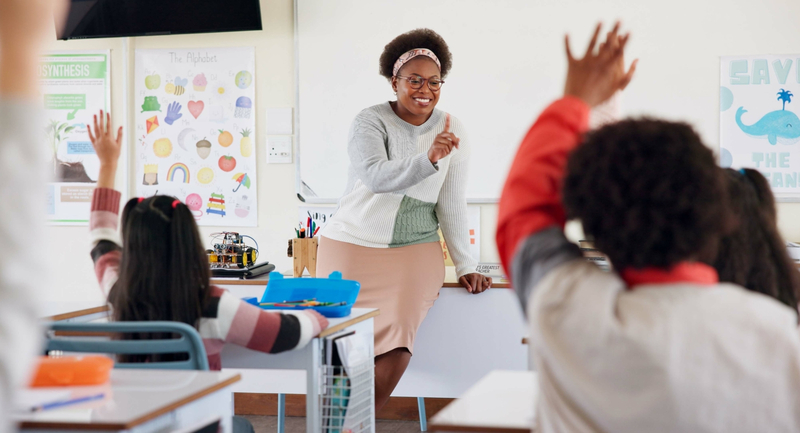U.S. Journalist Andy Rooney once mused, “Most of us end up with no more than five or six people who remember us. Teachers have thousands of people who remember them for the rest of their lives.” This type of relationship starts in the classroom on day one and often extends for decades, never to be taken lightly, and always held as an honor. As educators, we teach content, but, more important, we teach students how to be productive humans in life.
When we were coteachers in a high school social studies classroom, we wanted our students to have the best possible experience in our classroom and take those good memories with them. But when we encountered students who struggled to follow expectations such as daily attendance, active participation, and finding the motivation to be successful in class, we experimented with different strategies to build connections because we knew this was necessary for academic success. Before learning could take place, we had to establish a foundational level of trust. After a great deal of trial and error, here are the top five ways we found to build relationships in the classroom and to be proactive in classroom management.
1. Connect with Families in the First Five Weeks
Since we were coteachers, we divided up our classes between us and decided which of us would write a quick, positive message to families each week. Setting aside five minutes a day for an email was all that was needed to work through our lists and stick to our goal of contacting each family in the first five weeks of the school year. As a result, we’d often see a surprised and happy student walking into class the day after we sent an email home. Upon receiving a positive note about how her child had helped another student in class, one mother responded, "You will never know how much this email means to me. This is better than Christmas!”
Before learning could take place, we had to establish a foundational level of trust.
The email doesn’t have to be long—just make it positive and personal. All kids and parents deserve positive feedback. And when or if there is a problem that you need to contact a family about, you’ve already established a trusting relationship.
2. Be at the Door - Always
We made it a point to welcome our students at the door each day with a positive, personal greeting. After some time doing this, we realized one student never responded when we greeted him. The standard “Good morning, how are you?” had become so rote to him that he tuned it out, thinking his teachers didn’t really care to hear his answer. One day after we greeted him, he walked to his seat, then saw us still looking at him, waiting for an answer. He was surprised to see that he still had our attention, and he quickly responded that he was fine. Each day after that, he engaged with us more at the door and slowly began to open up.
How many students walk by their teachers assuming they do not really want to know how they are doing? Our profession is about showing care and love to students, and one way to do this is by building relationships before instruction takes place. To show you care about a student as an individual, mix up your greetings based on what you know about the student. Ask about their day, how the game went last night, what TV shows they are watching—even what they’re having for lunch that day. As they open up, be sure to remember what they share so you can reference it the next day.
3. Begin Class Thoughtfully
When we first started coteaching, we felt the need to use every minute of class for instruction. In our classroom, we have a “bell-to-bell” policy, meaning in exchange for rarely giving homework, we expect our students to work, with optimum effort, from bell to bell. However, we realized we were spending the first three to five minutes of class trying to get students to settle down, stop talking, and pay attention. Instead of trying to fight this energy at the beginning of class, we instituted “chat time,” which simply meant we would start the class chatting with the kids. We shared funny stories about ourselves, our families, our days, and, in turn, we let the kids share about themselves.
'Chat time' gave the kids a few minutes to wind down, while allowing us to get to know one another on a very human level.
We discovered after implementing chat time that our students came in and quickly sat down, and we started to see fewer behavior issues at the beginning of the period. Students go from class to class, all day long. “Chat time” gave the kids a few minutes to wind down, while allowing us to get to know one another on a very human level. Some ideas we’ve used for chat time conversations include:
- How was your weekend?
- What is the best thing you ate over break?
- What TV shows are you binging?
- What’s the best gift you’ve ever given?
- If you could have lunch with anyone—living or dead—who would it be?
- What would be your entrance song if you were famous?
One note of caution: “chat time” should have some level of planning. Ensure all students get to chat equally. One way to do this is to present questions and topics that interest a variety of students. This is also a suitable time to teach and reinforce friendly conversation and active listening skills. The few minutes of academic instruction you give up at the beginning of class you will get back with more productivity and less chatting during focused instructional time. Another advantage is that over time, your class will become more cohesive and connected. This short but important discussion period gives students the opportunity to become aware of what they have in common, rather than focusing on their differences.
4. Write Class Thank-You Notes
Another strategy that we found successful was to write thank-you notes to all our students at the 10-week marking period. In the notes, we thanked each student for their hard work, specifically stating what we appreciated about them. We also described an area where we hoped to see them grow during the next quarter. (Be warned, kids will read each other's cards, so be sure to personalize them.) With only three to four sentences on each card, this was a quick but meaningful way to build relationships. The response was remarkably positive; even our most difficult-to-please students appreciated these notes. Many of our students kept them taped on the inside flap of their binders the entire year. The thank-you notes showed our students that we cared about them and helped to establish a sense of trust. Our class became a safe place and learning occurred because students knew their teachers were invested in celebrating their accomplishments and growth.
5. Send Messages During Class
Another easy strategy to build relationships with your students is to print notecards with quick, positive affirmations or reminders on them that you can quickly place on a student’s desk as you are teaching. Ours were the size of business cards, with messages such as:
- Thanks for working so hard. We noticed _______ [fill in the blank].
- Everything OK?
- Keep up the great work!
Personalize the messages for what your students need. These cards are a quick, uncomplicated way for teachers to check in with students during instruction to help them feel noticed and appreciated. In some cases, if a student let us know they needed something, we would follow up with a trusted adult at school, such as our school counselors, for extra support. It is incredible what a difference a small gesture can make for the tone of your class. Often, students who come to class angry or with personal baggage just need to feel seen. These quick and easy notecards give you an opportunity to let students know you notice them.
Time Worth Taking
These five strategies serve as essential pillars for fostering relationships and building a necessary foundation for learning. The clock and the calendar are always working against educators, but spending time filling students' emotional bank accounts will create safer, more trusting classroom environments. We have personally seen the effect these strategies can have, and hope other educators will have success implementing them in their classrooms.








